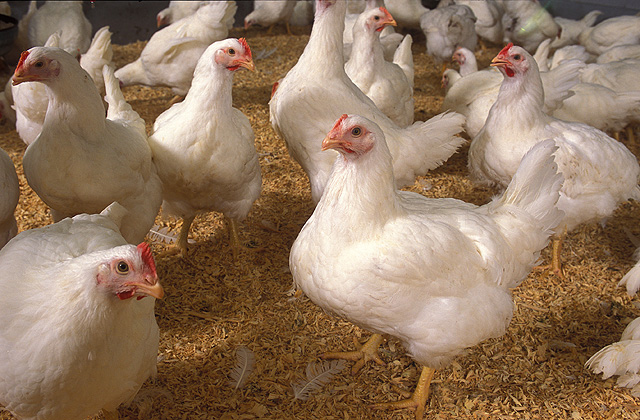Solanum glaucophyllum reduces lameness in heavy weight broilers
By Jan Dirk van der Klis, Herbonis Animal Health and Adnan Alrubaye, University of Arkansas
Lameness in broiler chickens has a big impact on animal welfare, broiler performance and farm profitability. Lame birds most likely experience pain and have difficulties accessing feed and water. Lameness can have different causes, like bird management (for example, stocking density, lighting schedule, bedding material, water quality and barn climate), nutritional imbalances, as well as intestinal health problems (inducing poor intestinal epithelial integrity, wet litter and foot pad lesions).
Also, the final body weight of birds impacts the incidence of clinical lameness, as higher weights of the breast muscles increase forces on leg bones, causing microfractures being associated with increased susceptibility for bacterial colonisation in bone tissue.
Bacterial chondronecrosis and osteomyelitis (BCO) lameness is an infectious leg disorder, resulting in femur and tibial head necrosis and impaired gaits, resulting in lameness especially in heavy weight broilers.
The majority of the infections occurs at a young age, although lameness becomes apparent in the second half of the production period. Also, other studies indicated a correlation between high first week mortality and later lameness in broiler flocks. Postmortem examination in birds suffering from BCO lameness, indicated the presence of Staphylococcus spp, E. coli, and Enterococcus spp in the growth plates. These bacteria translocate across the epithelia of the intestinal and/or respiratory tract into the blood and colonise near the growth plates of the leg bones, causing necrosis leading to lameness.
Therefore, improved intestinal and respiratory tract epithelial integrity could reduce the occurrence of BCO in broilers. Solanum glaucophyllum, or waxy leaf nightshade, is a plant that naturally contains the bioactive form of vitamin D after the glycosides are cleaved in the intestinal tract of the bird.
It is not only recognised for its effects on calcium and phosphorus metabolism and bone health, but also on acquired and innate immunity.
We have tested the effect of Solanum glaucophyllum provided as Panbonis to reduce the incidence of BCO lameness in heavy weight broilers at the University of Arkansas. Seeder birds were housed in two pens with raised wired floor in the front of the barn.
Water nipples and feed bins were located on opposite sides of the pens to stimulate bird movement. Receptor birds were housed in floor pens on wood shavings (four replicate pens per treatment, where treatments were randomly allocated to the floor pens).
Each pen had a separate water and feed supply. The stocking density was 50 birds per 1.5 x 3m pen. The experimental period was 56 days. Seeder and control birds received the same basal diet.
Treatments were 1) the basal diet supplemented with 100g Panbonis/t during the entire 56-day period, providing 1 µg of 1,25(OH)2D3/kg feed, or 2) during the first 28 days followed by the unsupplemented basal diet or 3) vice versa to treatment 2, supplying the Panbonis supplemented diets from 29 to 56 days of age. Lame birds were culled and necropsied to confirm BCO and score its severity.
Visible lameness started after 35 days of age. Seeder birds on the raised wired floor developed the highest incidence of lameness, which was confirmed to be caused by BCO.
Receptor birds on wood shaving, receiving the control diet, showed a slightly lower incidence of lame birds, whereas birds receiving the Panbonis supplemented diet throughout the full 56-day showed an approximately 50% reduction.
Feeding the Panbonis supplemented diet during the initial 28 days was like the treatment
given Panbonis throughout the full experimental period. In contrast, when feeding the Panbonis supplemented diet from 29 to 56 days of age, lameness was similar to the control, being reduced by only about 10%.
Based on this experiment it was concluded that supplementing diets with 100g Panbonis/t during at least the first 28 days of life significantly reduced cumulative BCO lameness of birds. As there was no physical contact between birds from different pens, and the feed and water supply were arranged per pen, spreading of the pathogens was most probably via the air.
Supplementing the diets reduced lameness either by improving epithelial integrity of the respiratory tract which reduced bacterial translocation, or by stimulating innate immunity. The exact mode of action needs to be confirmed.


